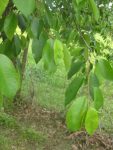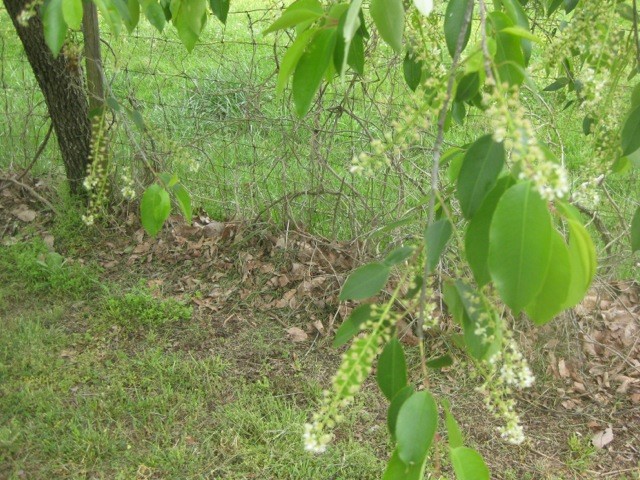 Is this poison sumac? Or something else! It’s a medium-size tree. We are in North Carolina near Winston-Salem. Thank you, Nancy
Is this poison sumac? Or something else! It’s a medium-size tree. We are in North Carolina near Winston-Salem. Thank you, Nancy
To follow this topic, click here.

 Is this poison sumac? Or something else! It’s a medium-size tree. We are in North Carolina near Winston-Salem. Thank you, Nancy
Is this poison sumac? Or something else! It’s a medium-size tree. We are in North Carolina near Winston-Salem. Thank you, Nancy
To follow this topic, click here.
Hi Nancy, thanks for writing. That’s not poison sumac, it’s a black cherry, Prunus serotina. The large bunches of small white flowers are a good clue. When the fruit matures later in the season, it will look like this photo. The dark, rough, flaky bark is a good identifier, as well.
Prunus serotina is native to North America, but has been introduced to other parts of the world, where it can be invasive. The genus Prunus includes plums, cherries, apricots and other similar fruits. Like most of the other species in this large genus (400+ species), black cherry produces compounds in the leaves and seeds/pits that can release cyanide under certain conditions. So even though the fruit is safe to eat, and is a major source of food for wildlife, livestock should not eat black cherry leaves. Tom
I have a follow up question about chokecherries. I live in south central PA. On my nature walks along our local railtrail, I see piles of what appear to be chokecherries or black cherries that look as though they were eaten and then puked back up by an animal. I’ve seen these little piles quite often since July when the cherries ripen. I can picture a fox (I’ve seen kits eating them off the ground), racoon or other critter gorging on them but then vomiting them back up due to the toxins. Then I wondered if this is the origin of the common name “chokecherry”. Thanks in advance for your response.